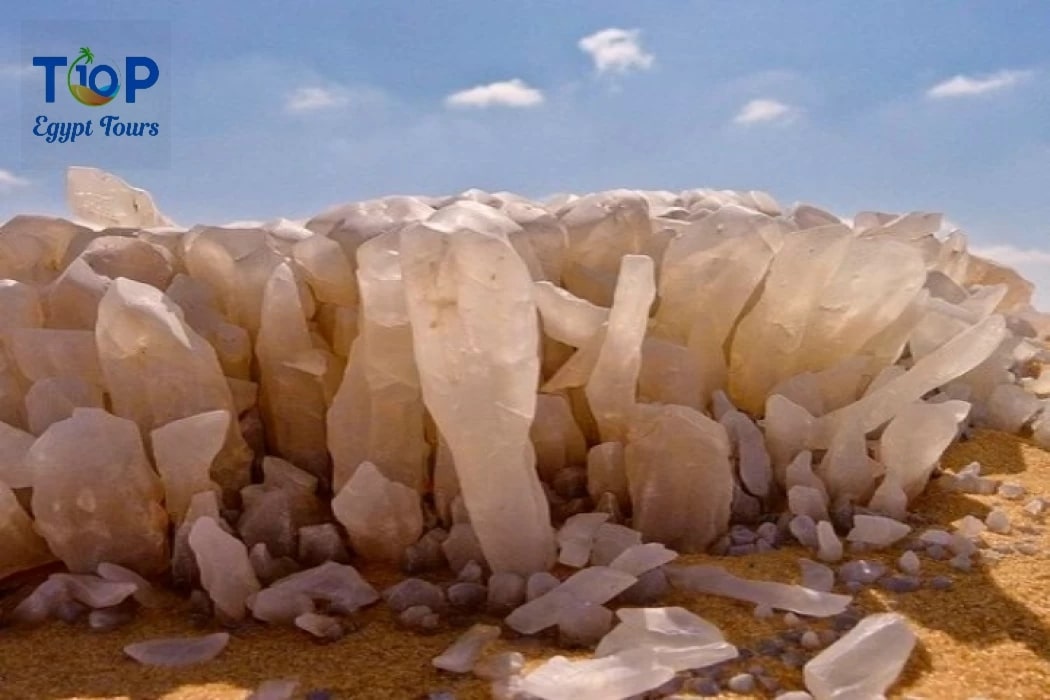The New Valley Governorate is located in the southwest of Egypt in the Western Desert, and its capital is Kharga. Bordered by the Libyan Desert to the west and the Nile River to the east, the governorate covers a diverse range of landscapes, including deserts, mountains, and fertile oasis areas. It is considered the largest governorate in Egypt in terms of area and Africa. The area of the governorate is 440,098 km2.
The New Valley Governorate consists of three oases
Kharga Oasis: The largest of the oases, Kharga is known for its vast date palm groves, ancient fortresses, and archaeological sites. It has been a vital stop for travelers and traders throughout history.
Dakhla Oasis: Renowned for its serene beauty, Dakhla is home to ancient settlements, mud-brick architecture, and vibrant birdlife. Its archaeological sites offer a glimpse into the region’s past.
Farafra Oasis: With its unique white desert landscapes, Farafra stands out for its surreal beauty. The oasis is a haven for artists, and its small community is known for its distinct culture.
The most important landmarks of New Valley Governorate:
White Desert Reserve
It is one of the most beautiful and important natural reserves in the Arab Republic of Egypt. It is 38 km away from the city of Farafra in the direction of the Bahariya Oasis and adjacent to an asphalt road with a depth of 25 km. It is a sedimentary formation of limestone, erosion factors have shaped many parts of it into different animal or plant forms and is characterized by the beauty of nature. The picturesque, dry atmosphere is clear of environmental pollution, and some trees such as acacia and palm trees grow among these rocks.
Wadi Hans
These areas are 55 km away from the city of Farafra, towards the north, and receive a large demand from tourists to spend a night or more, especially on lunar nights, to enjoy the beauty of the picturesque nature and the dry, pure atmosphere free from environmental pollution.
Temple of Hibis
The Temple of Hibis is located about 1 km north of the city of Kharga. This temple is of special importance as it represents the different historical eras: Pharaonic, Persian, Ptolemaic, and Roman.
Archeology Museum in Kharga
This museum includes many ancient artifacts that were found in various archaeological sites, including Pharaonic paintings that were found in the area of Al-Dhaba Castles in Balat, a statue of the god Horus, and a statue of a lion crouching with a human face that was found in the Deir Al-Hajar temple, in addition to a collection of pottery vessels.
Deir el-Hajar Temple
It is about 15 km away from the palace and 47 km from the city of Mut. It dates back to the era of the Roman emperors (Emperor Nero). It was built of sandstone and engraved on its walls are pictures and inscriptions representing the Pharaonic faith. It was built to worship the gods Amun, Mut, and Khonsu, and it is one of the important temples in Dakhla.
The New Valley Governorate is a captivating blend of history, nature, and culture. Its oases, archaeological sites, and untouched landscapes make it a destination for those seeking an off-the-beaten-path adventure in Egypt. As more travelers discover the wonders of this region, the New Valley Governorate is poised to become a hidden gem in the tapestry of Egypt’s diverse attractions.



Comment (0)